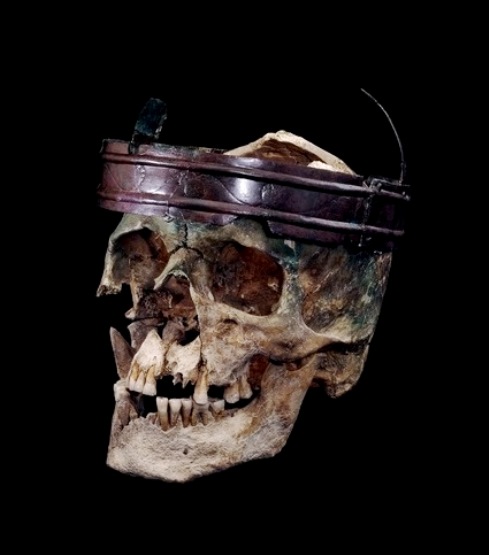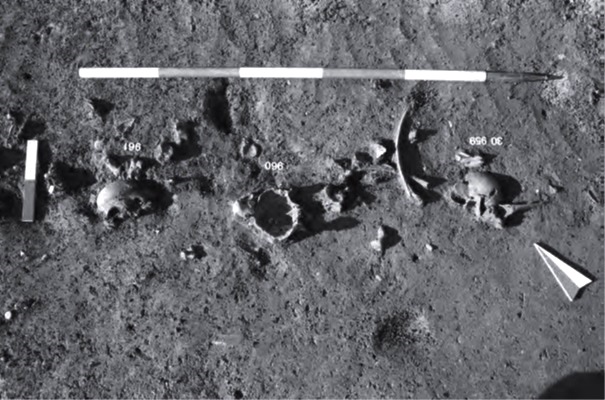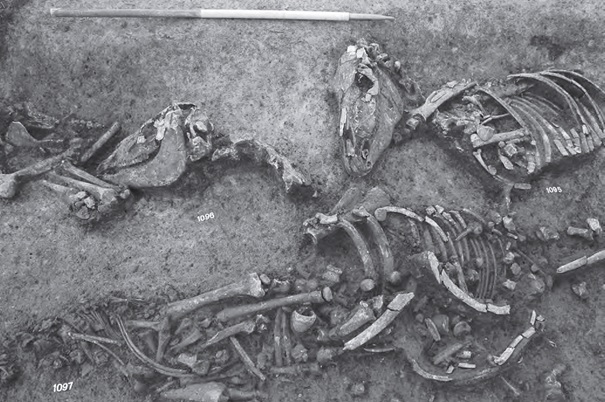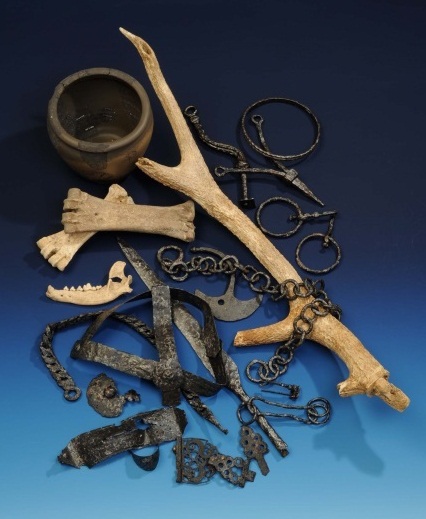UD: December 2018
“To you alone ’tis given the heavenly gods
To know or not to know; secluded groves
Your dwelling-place, and forests far remote”.
(Pharsalia Book 1:453-456)
Recently published material from the Celtic settlement at Roseldorf, situated on the Sandberg in the western Weinviertel in Lower Austria, has furnished a wealth of new archaeological material pertaining to the Iron Age inhabitants of this area in particular, and pan-Celtic cult/religious practices in general.
Excavations at Roseldorf, the largest La Tène settlement in Austria, have uncovered a Celtic settlement of supra-regional economic and cultural importance, as attested to by the discovery of coins of the Vindelici Manchinger type and Buschl-quinars from Lower Bavaria, as well as coinage produced by Gaulish and Balkan Celtic tribes. Furthermore, many small zoomorphic figurines from Roseldorf have parallels especially in the northeast, in the Celtic settlements at Nowa Cerekwia in Poland and Němčice in Moravia (Holzer 2014).
In the present context, of particular interest at Roseldorf are 3 cult districts with seven sanctuaries which played a major role in the functional orientation of the complex. Although evidence of human sacrifice has not been identified at the site, evidence of post-mortem manipulation of the bodies has been established, consistent with the Celtic practice of exhumation.
Carved and pierced deer-antler, believed to have been attached to a statue of the Celtic God Cernunnos
(After Holzer V. (2014) Roseldorf – An Enclosed Central Settlement of the Early and Middle La Tène Period in Lower Austria. In: Paths of Complexity. Centralization and Urbanization in Iron Age Europe. Oxford/Philadelphia 2014. p. 122-131)
From the first sanctuary area (object 1), the antler shows signs of complex artificial treatment. The natural coronet has been removed and a new one cut to extend the pedicle in order to fix it more easily with an iron nail or pin. It is believed to have formed part of the statue of a deity, probably Cernunnos.
On Cernunnos: https://balkancelts.wordpress.com/2015/07/04/cernunnos-and-the-ram-headed-serpent/
Fragments of human skulls found at the second large sanctuary (object 30) at Roseldorf.
(On Celtic Excarnation see:
https://balkancelts.wordpress.com/2013/09/05/excarnation/ )
Remains of horse sacrifices in the second large sanctuary at Roseldorf
The numerous horse harnesses, horse skeletons and chariot parts etc. discovered in this area have led archaeologists to interpret it as a sanctuary to the Celtic horse-goddess Epona
On the Celtic Horse Goddess:
https://balkancelts.wordpress.com/2012/09/11/epona-the-celtic-horse-goddess-in-thrace/
.
THE DRUID CROWN
Perhaps the most interesting artifact to come from the site is an iron ‘Druid’s Crown’ discovered in the first large sanctuary at Roseldorf. The crown has been ritually ‘killed’ before deposition – i.e. deliberately bent/deformed, according to Celtic religious ritual.
Ceramic, antler, bone, weapons and other artifacts from the sanctuary area of the Celtic settlement at Roseldorf
The Roseldorf Druid Crown
(after Holzer 2014)
The Roseldorf Druid Crown corresponds to Parfitt’s type I, with an encircling headband and two bands crossed at the apex (Holzer 2009b: 175–177, 182; Parfitt 1995: 72–82; see Holzer 2014). The best example of such a crown was discovered in the burial of a Celtic ‘warrior-priest’ at Mill Hill Cemetery in Deal (Kent), England. Dating to the early 2nd century BC, the Deal Crown was found on the head of a warrior buried with his sword and shield, and consisted of two sheets of bronze, decorated in La Tène style, held together with rivets. The metal was worn directly on the head (i.e. not padded or strengthened with leather); when discovered impressions of human hair remained in the corrosion on the inner surface.
Burial of the Deal Priest-Warrior with weapons and Druid Crown
Also found in the grave were: an iron sword with bronze scabbard fittings and suspension rings for holding the sword on a belt; bronze parts from a wooden shield, and a bronze brooch decorated with applied coral studs.
Although not as elaborate as the Deal Crown, and incomplete, the Roseldorf example is particularly significant as it represents the first such found in an archaeological context in mainland Europe, and the oldest Druid Crown yet discovered.
The Deal Crown
.
Mac Congail







How do you know it is a druid skeleton , why not a King , or a prince , i thought the druids were
allowed to walk through battle lines unharmed , because they were non combatant holy men,
so how come the weapons , please explain
Read the British Museum link
I dont think this is the same significance as the Deal burial crown.The Roseldorf ‘crown’ found with its assemblage and made of iron not bronze or other metal,might just be something quite different.Not something worn by an individual of religious order.Just my opinion.